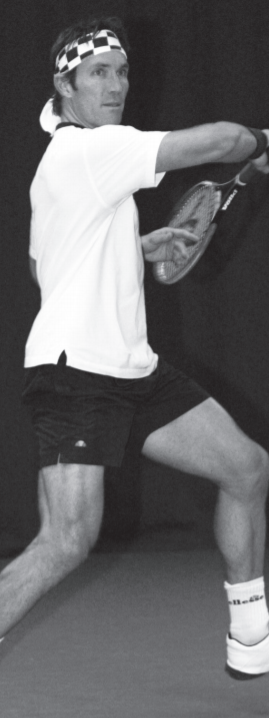Brad Langevad
Tennis is Brad’s primary passion and he played the professional tennis circuit in his youth. Despite the best coaching, a couple of his strokes kept letting him down, and this also led to painful injuries. Brad began to question the way tennis was being taught at senior coaching levels and within professional coaching associations, and the way injuries were being managed.
After completing a science degree, Brad began to explore the use of biostatistics, physics and computer technology to examine the movements of the body and apply it to tennis students. It became clear that conflicting body movements restrict a player’s ability to act fluently and caused injury. To test his theories, over several years Brad analysed videos of hundreds of athletes, from top professionals to everyday sportsmen. Brad found that the top athletes had a great deal in common, whereas the weaker performers varied greatly. Despite the idiosyncrasies that made the successful actions appear different, they varied only marginally. They were all following the same basic biomechanical principles naturally, and often in defiance of their coach’s methods. To complicate the issue, world champions had fine actions and weaker actions.
For the last 25 years Brad refined this understanding and continued to question the old orthodoxies, his coaching methods are based entirely on these fundamental insights. The success of his techniques has led many to believe that Brad’s professional and practical knowledge of biomechanics, particularly in relation to tennis, is unmatched. Wimbledon champion and also Brad’s good friend, Pat Cash, with whom he has worked with for 20 years, using these techniques, believes that Brad is ‘the best in the world’ at what he does. These are kind words, but the results do tend to speak for themselves.
Now based in Queensland he is open to looking to mentor and teach tennis players from amateur to professional in how to improve their technique through detailed scientific analysis.
I started with Brad about 20 years ago. To be honest, it was the best move I ever made. I learnt things that I never really understood before. I fixed the two great weaknesses in my game: my forehand and my serve. I only wish that I had known these things earlier in my career. It certainly allowed me to recover from injuries, and it added more power to my game and much more consistency.
This has helped me enormously to continue playing on the Champions Tour and to be more competitive, as the players on the Champions Tour are getting younger every year. I only wish that I had this information during my entire career as an ATP professional. I find Brad fantastic to work with. I use Brad’s principles in my own coaching. Listen and learn is all I can say! This is a great opportunity to see the future of tennis.
Pat Cash
Nadal vs Federer match analysis with Brad Langevad


